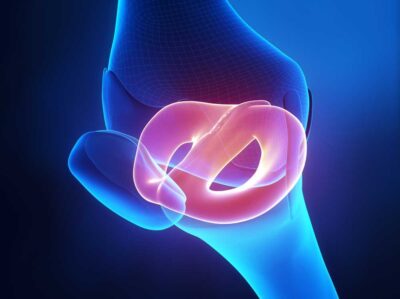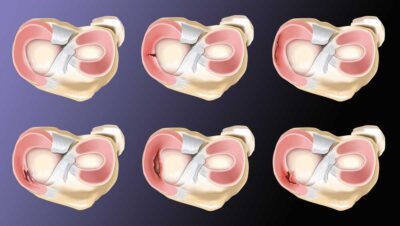Meniscus Injury Specialist

Do you participate in sports that require jumping, quick turns and hard landings? Are you experiencing pain and stiffness in your knee? If so, you may have torn your meniscus. A meniscus tear is among the most common knee injuries, especially among athletes. Meniscus tear specialist, Doctor Riley J. Williams provides diagnosis as well as surgical and nonsurgical treatment options for patients in Manhattan, Brooklyn, New York City and surrounding areas who have sustained an ACL injury. Contact Dr. Williams’ team today!
What is the lateral knee meniscus?
Each knee joint has two crescent-shaped cartilage structures which form the lateral and medial meniscus. The medial meniscus is located on the inner portion of the knee. The lateral meniscus is located on the outer side of the knee. Both structures act as shock absorbers between the femur (thigh bone) and the tibia (shin bone). The lateral meniscus is more oval than the medical meniscus and is larger, thus covering more surface space than the medial meniscus. The job of the lateral knee meniscus is to regulate the movement of the joint, lubricate the joint and absorb shock. The lateral meniscus helps prevent the knee from hyper-extension and over-extension.
What is a lateral meniscus injury?
A lateral meniscus injury occurs when the semi-circular cartilage tears, frays or degenerates due to wear and tear. Lateral meniscus injuries are not uncommon and most frequently occur from a traumatic injury, or a forced twisting motion in the knee. Tears to the lateral meniscus can be minor or severe and it is important to see orthopedic knee specialist, Riley J. Williams, who has extensive experience at treating lateral meniscus injuries. Patients from Manhattan, Brooklyn, New York City, NY and surrounding areas trust him to diagnose and treat their lateral meniscus tears with the latest and best orthopedic knee treatments available.
What is the red zone and the white zone in the meniscus?
The area in which an injury to the lateral meniscus occurs is important in the decision for treatment. Tears that occur in the outer third of the meniscus-the area known as the red zone-are more likely to heal either on their own, or with a surgical repair. The red zone of the cartilage is the area that has a blood supply. The supply of blood gives the body the ability to heal some tears. The white zone of the lateral meniscus is the area without blood flow. This area (the inner two-thirds of the meniscus) lacks the self-healing ability and tears in this portion cannot heal on their own; symptomatic inner rim tears typically needs surgical treatment.
What are the types of lateral meniscus tears?
Dr. Williams classifies tears to the lateral meniscus based on the size, shape and location of the tear. These include:
- Radial Tear – Most common type of injury or tear, occurring in the white zone and require surgical intervention
- Complex Tear – Comprised of more than one type of tear. Treatment will vary based on the size and area of the tear. Typically, complex tears require surgery.
- Bucket-handle Tear – This type of tear looks like the handle of a bucket; a displaced bucket tear can lock and catch the knee joint. Early surgical intervention is needed with bucket-handle tears of the lateral meniscus.
- Horizontal Tear – Also called cleavage tear, horizontal tears can be repaired if they are in the red zone of the meniscus.
What is a fasciculus tear or injury?
Fasciculus tears of the lateral meniscus are similar to meniscocapsular injuries where the meniscus pulls away or is torn from its normal attachment to the knee joint capsule. Fasciculus tears are common among athletes who participate in sports which require a pivoting action in the knee. Individuals who participate in sports like basketball, soccer and lacrosse are most likely to incur a fasciculus tear injury. Fasciculus tear injuries are often repairable.
What are the symptoms of a lateral meniscus injury?
The symptoms for a lateral meniscus injury are similar to any cartilage injury and may include:
- Pain, felt on the outer portion of the knee
- Swelling
- Sudden pain at the time of injury
- Clicking or snapping sound at the joint when moved
- Locking of the knee, or inability to bend or straighten the knee
- Feeling of instability, like the knee may “give way”
How is a lateral meniscus injury diagnosed?
Dr. Williams will conduct a full knee assessment including several specific tests which will confirm the diagnosis. These tests may include:
- McMurray’s Test – Often used to indicate a cartilage injury. Dr. Williams will move the knee a specific way while applying pressure. This can be used to detect a medial meniscus tear.
- Apley’s test – Dr. Williams will move the knee and apply a compressive force on the ankle while the patient is lying on their front. A clicking sound often indicates a torn meniscus
- MRI – Magnetic Resonance Imaging – shows the inside structures of the knee and can pinpoint the location, size and type of tear.
What is the treatment for a torn lateral meniscus?
Non-surgical treatment:
Whenever possible, Dr. Williams prefers a conservative approach non surgical treatment may include:
- RICE – Rest, Ice, Compression, Elevation
- Protection – A knee brace or wearing knee support while the cartilage heals
- NSAIDs – Non-Steroidal Anti-Inflammatory Drugs
- Physical Therapy – Specifically designed and recommended by Dr. Williams to regain strength and range of motion.
Surgical treatment:
If the tear of the lateral meniscus is displaced, at the meniscus periphery or fails to improve with nonoperative management and surgery is the best and quickest option for recovery, Dr. Williams may perform one or more of the following procedures:
- Arthroscopic Repair
- Lateral Meniscus Repair
- Partial Meniscectomy
- Meniscus Transplantation
Dr. Williams is extremely skilled in knee surgeries and in arthroscopic knee repair. Arthroscopic repair is a minimally invasive technique that uses a small camera and small instruments to perform the repair inside the knee. There are many benefits to arthroscopic knee surgery when done by a skilled surgeon like Dr. Riley J. Williams who has had extensive experience and successful results. Patients in New York City and the surrounding New York boroughs trust him to be the best at taking care of their orthopedic knee conditions and treatments.
For more information on meniscus injuries and lateral meniscus tears as well as the best treatment available, please contact the office of Riley Williams, MD, knee specialist serving Manhattan, Brooklyn, New York City, NY and surrounding areas.
Locations
610 W 58th Street
New York, NY 10019
148 39th Street, 7th Floor
Brooklyn, NY 11232





